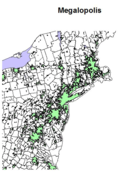Dennis Meyers is the Principal Economist at California’s Department of Finance. He has recently published two parts of what is promised to be a four-part series titled The Declinists are Wrong. He intends to convince us of “the fundamental strength of the Golden State’s dynamic and vibrant economy.”
I was going to wait until the entire series was complete before commenting, but part one and part two are so poorly argued that I feel compelled to respond now. read more »






















